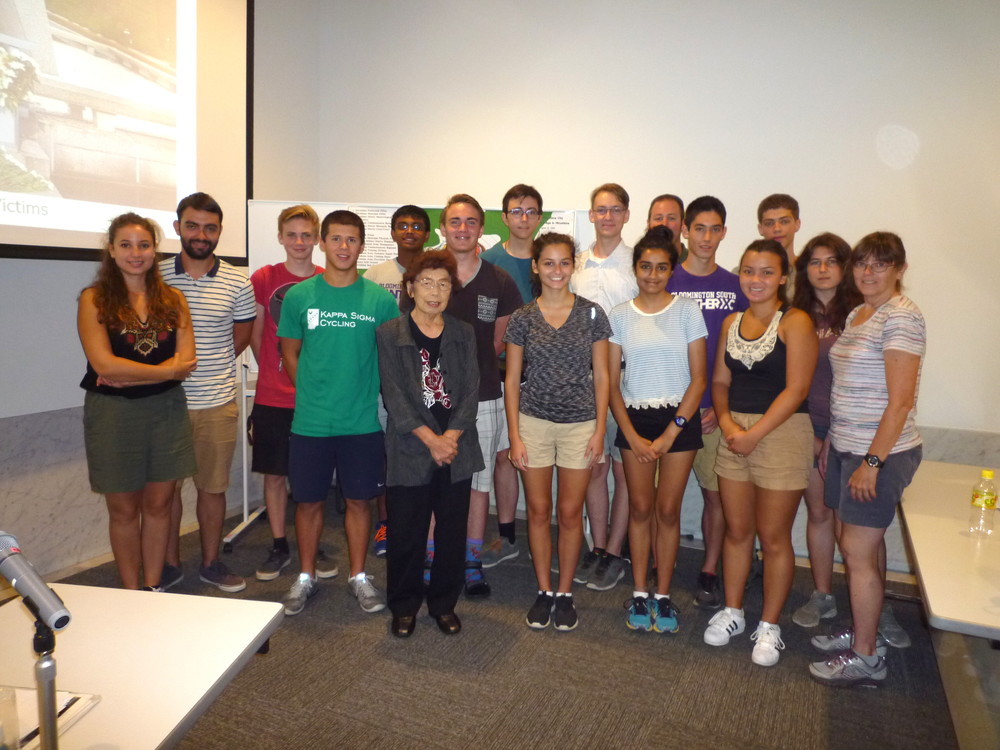Sadae Kasaoka
Losing both my parents all at once, I had no words to describe my loss
5. Beginning to Tell My A-bomb Story
Koi Elementary School, where my grandchildren went, held an event in 2000. Divided into groups, the 5th and the 6th graders listened to 30 local A-bomb survivors, drew pictures, wrote about what they had heard to make a play and presented it. I was invited to tell my story as one of the local A-bomb survivors. This was the first time I talked about my A-bomb experience to other people. After the A-bombing, Koi Elementary School became a first aid station and overflowed with victims who had fled from all over the city. About 2,000 bodies were cremated in ditches dug in the school grounds and then buried.
I was also invited to their performance. Even though they were elementary school students, I was so surprised to see how well they performed. The students listened to our testimonies, understood our feelings, took them firmly in their hearts and expressed what they received very well. On the other hand, until then, I hadn’t done anything about my A-bomb experience, so I thought that I must not keep silent anymore. After a while, I happened to see an article in a newsletter to recruit A-bomb survivors who would tell their A-bomb experiences. Until then, the same kind of article might appeared, but I hadn’t paid attention to it. I consulted with Miyoko Watanabe, a friend I met at a meeting of people raising children with one-parent. She had already begun telling her A-bomb experience and had hosted the Hiroshima Peace Ribbon Group. The activity of the group is to tie pieces of cloth on which A-bomb survivors and children draw messages to make a long ribbon and surround the A-bomb Dome with it. I took part in this activity several times.
Until my retirement in 2005, I occasionally visited elementary schools in the city to present my A-bomb testimony and gave my testimony at the Peace Memorial Museum to students on school trips. After retirement, I got seriously involved in this activity. Now, I tell my A-bomb experience mainly at the Museum about 30 times a year—20 times for students on school trips and 10 times for foreign visitors. I have also gotten requests to give my testimony from schools outside Hiroshima Prefecture, and I have visited many prefectures, from Hokkaido to Okinawa. In 2013, invited by Beijing University in China, I went abroad for the first time to tell my A-bomb experience. After that, I went to the United States, Turkey, Belgium and other countries.
Once, when I talked about my A-bomb experience in the U.S., one girl began to cry, saying “I didn’t know how horrible the A-bomb was. I’m so sorry that my country did this cruel thing.” It can’t be helped that many people don’t know about what happened under the mushroom cloud. That’s why I thought that we survivors must continue to tell our experiences. Until I went to the U.S., I had hatred toward America. However, my feeling has gradually changed. I don’t hate America. I hate the atomic bomb.
